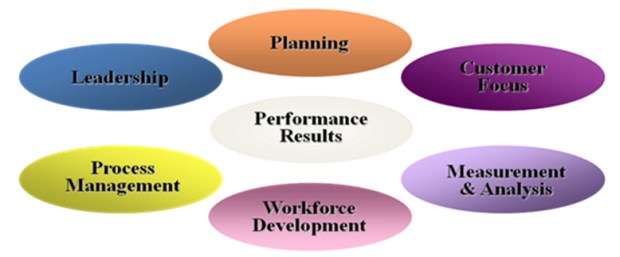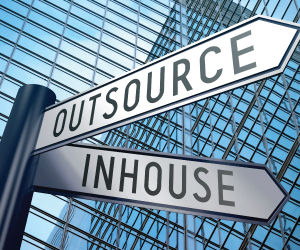High performance is a term that has been used over the last few years to describe what we once considered to be “green” buildings. Despite the changing language used to describe these facilities — from smart to green to sustainable to high performing — it has remained consistent that the characteristics used to define these structures are primarily based on the physical attributes of the building — energy and water efficiency, high quality indoor environments, conservative resource use, and appearances that do not make significant demands on the environment. Yet high-performance buildings are not islands. Once these design characteristics are incorporated, they require a strategic approach to operations and maintenance of these facilities and a significant commitment to developing the knowledge, skills, and abilities of the facility management organization.
We cannot achieve high-performance facilities without high-performance facility management. High-performance facility management requires a careful balance of inputs such as energy, labor, materials and capital (both political and financial). It requires excellence in work processes such as how we maximize space, utilize technology, and lead and manage our facility management workforce. The desired output is a safe, healthy, comfortable and productive work environment, while saving energy and resources, and operating in a cost effective manner. As we improve building systems to deliver high-performance, we will need to maintain a high-performance environment in the delivery of facility management services. Through a systematic evaluation of current facility management processes and procedures, based on experience, best practices, benchmarks, and industry standards, a facility management organization can put themselves on track to providing high-performance facility services.
High-Performance Buildings
High-performance buildings are characterized by their efficient use of resources and their ability to enhance the safety, health, and productivity of its occupants — two of the three basic elements of the triple bottom line. The missing element — operating economically — is an outcome of effective strategy, planning and management of the facility, while maintaining the other two elements of the triple bottom line. The Energy Independence and Security Act of the United States identified the following characteristics of a high-performance building in 20071:
- Reduced water, energy and material use
- Improved indoor environmental quality
- Reduced negative impact on the environment
- Increased use of environmentally-preferable products
- Increased reuse and recycling
- Integrated systems in buildings
- Reduced environmental and energy impacts of transportation
- Consideration of the effects of the building on human health
These are admirable attributes of a building. However, their presence does not guarantee economically efficient operation or long-term performance without the input and supervision of a well-qualified facility management organization. The facility management staff has knowledge of other inputs that will dictate long-term performance of the facility portfolio to include:
- Strategic approach of the organization toward asset management
- Asset management funding priorities and mechanisms
- Organizational commitment to Corporate Social Responsibility (CSR)
- Knowledge of the customer base (stakeholders)
- Knowledge of stakeholder commitment to CSR
- Communication tools for stakeholder feedback
- Technical knowledge of the systems required to deliver high-performance
- Tools for measuring, monitoring and reporting performance
- Management, communication, and financial skills
- Knowledge of and ability to respond to and adhere to regulatory requirements
- Ability to evaluate and adhere to quality standards
These factors and many others are additional inputs to the facility management organization and can act as drivers or obstacles for the operation of high-performance facilities. An equal commitment to a high-performance facility management organization can make the long-term management and operation of high-performance facilities much more readily achievable.
High-Performance Facility Management Organizations
Like any component of an organization, the facility management function should have high-performance of the organization as a strategic objective. This requires the merger of high performance management processes with the triple bottom line objectives of a viable sustainable facility management program. Although a single definition for a high-performance facility management organization does not exist within the industry, High Performance as a Goal, by Jim Whittaker and Teena Shouse, provides the following characteristics of a high-performance facility management organization2:
- Fully supports strategic business initiatives
- Enhances operational efficiencies and effectiveness
- Reduces costs both short-term and long-term
- Optimizes process performance
- Maximizes return-on-investment (ROI)
- Minimizes Total Cost of Ownership (TCO)
- Maximizes asset value and life cycle
- Continuously monitors for improved performance
- Builds pride and attracts new employees
An environment of high-performance starts with a systematic approach to assessing the current state of the facility management function, defining strengths and weaknesses, closing the gap between the current and high-performance state, and enabling a culture of continuous improvement. This process should also include performance measures and metrics for determining if the facility management function is meeting its objectives and communicating this performance to its stakeholders.
Assessing the Facility Management Organization
Assessment Framework
Many tools are available to assist in the assessment of management organizations. In general, they are based on quality measurement systems designed to measure product quality and improve process engineering. These measurement systems include Total Quality Management (TCM), Six Sigma, International Standards Organization (ISO), and Baldridge National Quality Award (BNQP). TQM and Six Sigma systems generally concentrate on driving process improvement to increase product quality and generate cost savings. ISO also focuses on fixing quality defects and product non-conformities. While some of the concepts are valid for facility organizations, a more specific framework for facility management organizations should focus on improving performance through leadership and management initiatives, the training and development of the facility management workforce, and increased stakeholder satisfaction. The Baldridge framework can be modified and applied as an organizational assessment framework for facility management organizations (refer to Figure 1). Evaluating facility management organizations with respect to the assessment framework outlined below, which integrates recognized quality standards for facility management services that links to key performance indicators (KPIs) aligned with the organization’s strategy, allows the facility management organization to be very effective in implementing improvements aligned with the mission/vision of the organization, accurately measure the results, and track trends.

Evaluation of current processes and procedures
Where do you start the improvement process? Using the categories above, facility managers can zero-in on enhanced performance. The first step is to develop a sound strategy that utilizes Leadership and Planning skills with a focus on the Customer. From there, concentrate on developing the facility management Workforce, with an emphasis on improving facility management operations and maintenance Process Management while ultimately Measuring & Analyzing results which will lead to more sustainable and efficient facilities, higher stakeholder satisfaction, and lower operating cost.
Leadership: The performance area of Leadership should include the evaluation of the following categories: strategic planning, organizational structure, budget process, stakeholder communication, internal communication, quality assurance and the utilization of FM trends and professional networking.
Planning: The performance area of Planning should include the evaluation of the following categories: asset management plans, facility master planning, life-cycle design process, emergency preparedness program, space management, and the presence of a focused sustainable facility management plan.
Customer Focus: The performance area of Customer Focus should include the evaluation of customer expectations, satisfaction and communication, and a link between the CSR program and facilities.
Workforce Development: The performance area of Workforce Development should include the evaluation of the following categories: job descriptions, succession planning, training programs, recognition and rewards, and performance feedback.
O&M Process Management: The performance area of O&M Process Management should include the evaluation of the following categories: Workflow processes and documentation, work management and work orders, asset and equipment inventory and management, facility audits and assessments, project and construction management, energy and sustainable facility management, grounds and custodial services, facility operations and procurement, levels of service, maintenance programs, security and life safety, adherence to applicable laws and regulations, and facilities management technology (automated work management).
Measuring and Analysis: The use of proper KPIs and development of a “dashboard” of operational indicators allows the facility manager to constantly measure and monitor the most important operational characteristics. These KPIs can then feed into a Balanced Scorecard that allows an organization to measure and constantly evaluate their efforts to improve operational efficiency. These measures can be used to check progress against specific goals, or to benchmark against the operational efficiency efforts of other organizations and adopt best practices in facility management.
Asset Reporting Mandates
As a final note to sustainability management and the development of high-performance facility management organizations, the increasing pressure around the world to disclose environmental performance is becoming a driver for organizations to improve the way they manage their assets. Financial performance is not the only indicator that stakeholders are evaluating when choosing products, services or investments. Sustainable and high-performance facility management enhances the value of the physical assets of the organization and facilitates the reporting of environmental commitment and the Corporate Social Responsibility of an organization.

As reporting frameworks, such as ENERGY STAR Portfolio Manager and the Global Reporting Initiative, develop and become commonly used, the need for sustainable facility management will increase. Organizations that adopt a performance management system that enhances their ability to report their financial and social value to all stakeholders will have a higher value and more competitive product or service to offer. The facility management organization can become one of the key drivers of the reporting process through high-performance and sustainable facility management.
Just as high-performance facilities are within our grasp, high-performance facility management organizations are achievable through planning, action, measurement, and feedback — the fundamental steps of sound management practice.





